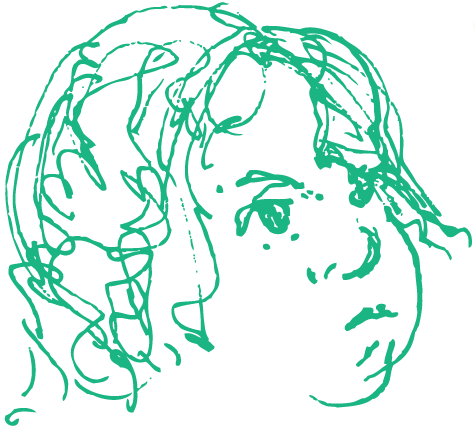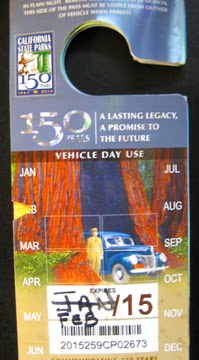Here, we are settling into the third week of May. Somewhere around May 19, May 22 maybe. We're not particular.
Yes, we're from the future. Thanks to an aggressive daylight saving program, we sprang forward many, many times, lopping off months. It's easy when you eliminate winter.
Downside: Solemn Spring ceremonies to celebrate rebirth and renewal are awkward, since you can't welcome what didn't go away in the first place.
Trees have leafed out already, fluorescent green. Shrubs have exploded in flowers, spewing their suffocating perfumes and casting nutlets with ochre snowdrifts on the walkways. Everything reaches to the warm sky.
Everything you'd expect of May 19, or maybe May 22.
Everything is Spring — except the water. The water is late summer. The mighty Sacramento River, our Mississippi, winding more than 200 miles out of the Cascade range far north, past Sacramento and down another 100 miles to San Francisco Bay, is syrupy and somnolent, dark green and dying, marking a new ring on the land with each week, lower and lower in its bed. The American River ladles into the Sacramento, trickling over a sandbar.
Lake Tahoe, the great deep sapphire mecca, 100 miles away in the Sierra, runs low too. It's hard to look at the pictures.
By the time you reach May 19 or 22. We'll be in August, the hills sere and probably aflame. The rivers, in autumn, will be ahead of us in the future still, aching for winter that may or may not come.
We're in a drought, of course. You probably heard. The worst ever recorded, some say. Superlatives don't really matter here. Either California will run out of in a year, as a NASA scientist projected, or it won't.
The larger truth remains: We waste precious, fragile, finite water. We are champions of taking it for granted, and we need to change it, feast or famine.
I call a curb appeal on curb appeal.
It's customary in such a crisis to throw around blame, and farmers are the customary target. Though I can't claim to know much more about farming than the average shopper, I can at least claim that much, having reported on the industry for a job.
Farmers, I learned as a reporter, grow food! That we eat! To live! World markets crave California foods, many of which are grown here only. Jobs, economy, esteem, natural resources harnessed.
Maybe some farmers waste water. The farmers I met pay dearly for water, or must wait behind other farmers in a Byzantine construct of laws that give first-serve priority to some over others. For the farmers I met, water is a costly input to be parceled out, so trees and crops get drip irrigation at optimum times of day for optimum use.
You can find exceptions, but this is the rule.
Why grow crops for farm animals to eat? You might challenge. Grow that food for humans! Stop eating meat, I'll say back. Farmers must respond to market demands (for the most part; some crops are grown or not grown for silly reasons to meet some untenable law or the other, but California is largely a market-trigger farm economy, not propped up by subsidies).
In general, yes, farmers use a huge majority of the state's water. But their water goes into food we need and that the world buys. Leave farmers alone in this, except to encourage more efficient irrigation more widely.
The solution is no farther than your own yard.
Having resumed long walks, I tell you it's rare that a lawn is not bright green and lush. Maybe one in 30 homes has a dreary unwatered lawn (like mine) or planned xeriscaping. The rest, full green and growing.
Homes that obviously want from urgent attention elsewhere still have green lawns. Homes with trucks parked diagonally across the front lawn still do not deprive those tires of soft, cool emerald carpet.
Maybe Sacramento is different, I'll grant. People tell me that Sacramento has just relied on two rivers flowing by, and drawn up its water as it has pleased — I'm not native. Water was only recently metered here (yeah, I know, hard to believe), though the cost of water is relatively low and no one seems to care we're in a drought.
That lawn does no good. Oxygen into the atmosphere, maybe, but we can live with the loss. It makes us feel good, I guess. It makes people feel good driving by, triggering in us some sort of pride in our bounteous place the world.
Even the water that sheets off sidewalks and runs into the gutter a block down to the storm drain: "Curb appeal."
We need to change our minds. We are bleeding ourselves out in stupidity.
Ditch your lawns. Let 'em die. Need greenery? Put in native plants on drip irrigation. After one season, you won't need to water. Also, you can live without a lawn. Give it a try.
It might surprise you that California was not covered in vast manicured lawns when the Miwok and Maidu came to this place thousands of years ago. This is a dry so-called Mediterranean climate, but we wash down our driveways like we're Seattle.
This just in: Washington and Oregon, also suffering drought.
Golf courses? Kill your lawns. Golfers? Lump it. Embrace the new challenge. Your Scottish forebears did.
The same goes for houses of worship. If green lawns are what congregates your people, you're not doing your job very well.
Government facilities? Stop watering. Keep only the parks green so the community can share some enjoyment.
You too, apartment complexes. Give renters a break.
In fact, give us all a break. We live for rewards, not punishments. Tax breaks for triggering certain low-water usages. Let's race to the brownest!
This drought may not get worse, but droughts may come more frequently, and a long-term drought is projected by 2020.
Even if we're flush again, so to speak, we need to stop being such pigs with water.
The chairman of Nestlé, Peter Brabeck-Letmathe, caught global flak for saying water is not a human right and that a value should be assigned to water as a commodity. He has backpedaled since to make the point I can advocate: We deprive water to those who need it most, and waste the good water we have.
Gov. Jerry Brown (coincidentally, governor during our last great drought of 1976-77) has called for greater water storage as response to this drought. I like Gov. Brown mostly. He has so been there and done that that he manages the state with clear eyes and not much care for what naysayers say.
So I'm flabbergasted that he has not done what I'm asking, what he asked during the last great drought.
Stop wasting our water.
















